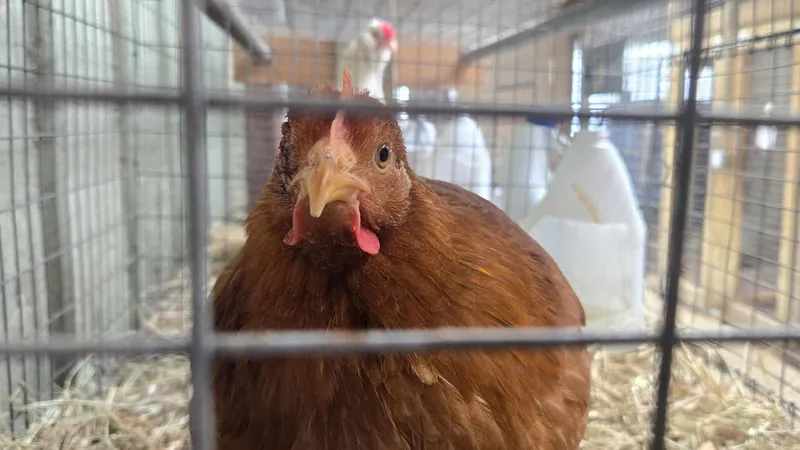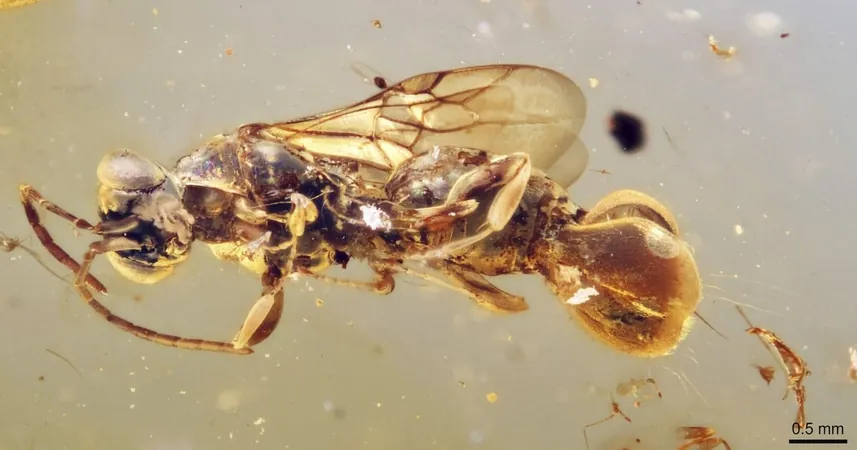
Alarming Developments in Bird Flu: Resistance Mutation Raises Serious Concerns
2025-03-27
Author: Liam
New research has unveiled troubling developments regarding H5N1, the highly pathogenic bird flu virus, as it continues to pose a threat to human health. Two pivotal studies conducted in 2025 shed light on the virus's evolving behavior and the efficacy of current antiviral treatments. While there is some encouraging news about existing drugs, the emergence of a resistance mutation in Canada raises significant alarms.
Current Antiviral Effectiveness
Researched extensively by the CDC and reported in the journal *Emerging Infectious Diseases*, recent findings indicate that H5N1 strains from human infections in Cambodia, Chile, and the United States from 2023 to 2024 have maintained susceptibility to frontline antiviral medications, including oseltamivir (Tamiflu). This antiviral functions by blocking neuraminidase, a critical protein that facilitates the virus’s spread by allowing new viral particles to exit infected cells. However, the drug's effectiveness is contingent upon the virus’s sensitivity to it.
Key Findings from Recent Studies
In the promising study, all analyzed H5N1 viruses remained responsive to oseltamivir, zanamivir, and peramivir, alongside baloxavir, which targets different viral proteins. Furthermore, most strains showed continued sensitivity to older M2-blocking antivirals, with the exception of two strains from Cambodia. These results encourage ongoing reliance on oseltamivir for treating and preventing H5N1 infections, especially among close contacts of confirmed cases.
Despite this positive news, a shadow looms over the situation. An alarming study featured in *Emerging Microbes & Infections* reported a widespread H5N1 outbreak among poultry in British Columbia, Canada. Genetic analysis revealed the presence of the H275Y mutation in the neuraminidase gene—a mutation notorious for conferring resistance to oseltamivir. This mutation had previously caused significant resistance issues during the 2008-2009 flu season.
Rapid Spread of Resistance Mutation
What is particularly concerning is the speed at which this resistant strain proliferated. Within just 27 days, the mutated virus spread across 44 farms, highlighting its potential for efficient transmission despite possessing a mutation typically associated with reduced viral fitness. The increase in transmissibility through reassortment—a genetic mixing process involving the exchange of segments between influenza viruses—demonstrates how H5N1 can adapt and thrive even in challenging conditions.
The Need for Vigilance and Strategic Action
These findings emphasize the critical nature of genomic surveillance, not only among humans but also within poultry and wild bird populations—areas where the virus continues to evolve. As our defenses are tested, the conversation may need to shift towards exploring combination therapies, which could slow the development of resistance. Preliminary research suggests that using a combination of antivirals with distinct modes of action could significantly decrease viral load and inhibit the emergence of resistance.
Experts agree that although Tamiflu remains effective against current strains of H5N1, the ongoing mutations represent a clear warning: we must adapt our strategies promptly. Vigilance, continued research, and perhaps even novel treatment approaches will be essential as we confront the evolving threat of bird flu—an issue that may no longer be confined to poultry but could increasingly affect public health on a global scale. Stay tuned for further updates as the situation develops.









 Brasil (PT)
Brasil (PT)
 Canada (EN)
Canada (EN)
 Chile (ES)
Chile (ES)
 Česko (CS)
Česko (CS)
 대한민국 (KO)
대한민국 (KO)
 España (ES)
España (ES)
 France (FR)
France (FR)
 Hong Kong (EN)
Hong Kong (EN)
 Italia (IT)
Italia (IT)
 日本 (JA)
日本 (JA)
 Magyarország (HU)
Magyarország (HU)
 Norge (NO)
Norge (NO)
 Polska (PL)
Polska (PL)
 Schweiz (DE)
Schweiz (DE)
 Singapore (EN)
Singapore (EN)
 Sverige (SV)
Sverige (SV)
 Suomi (FI)
Suomi (FI)
 Türkiye (TR)
Türkiye (TR)
 الإمارات العربية المتحدة (AR)
الإمارات العربية المتحدة (AR)